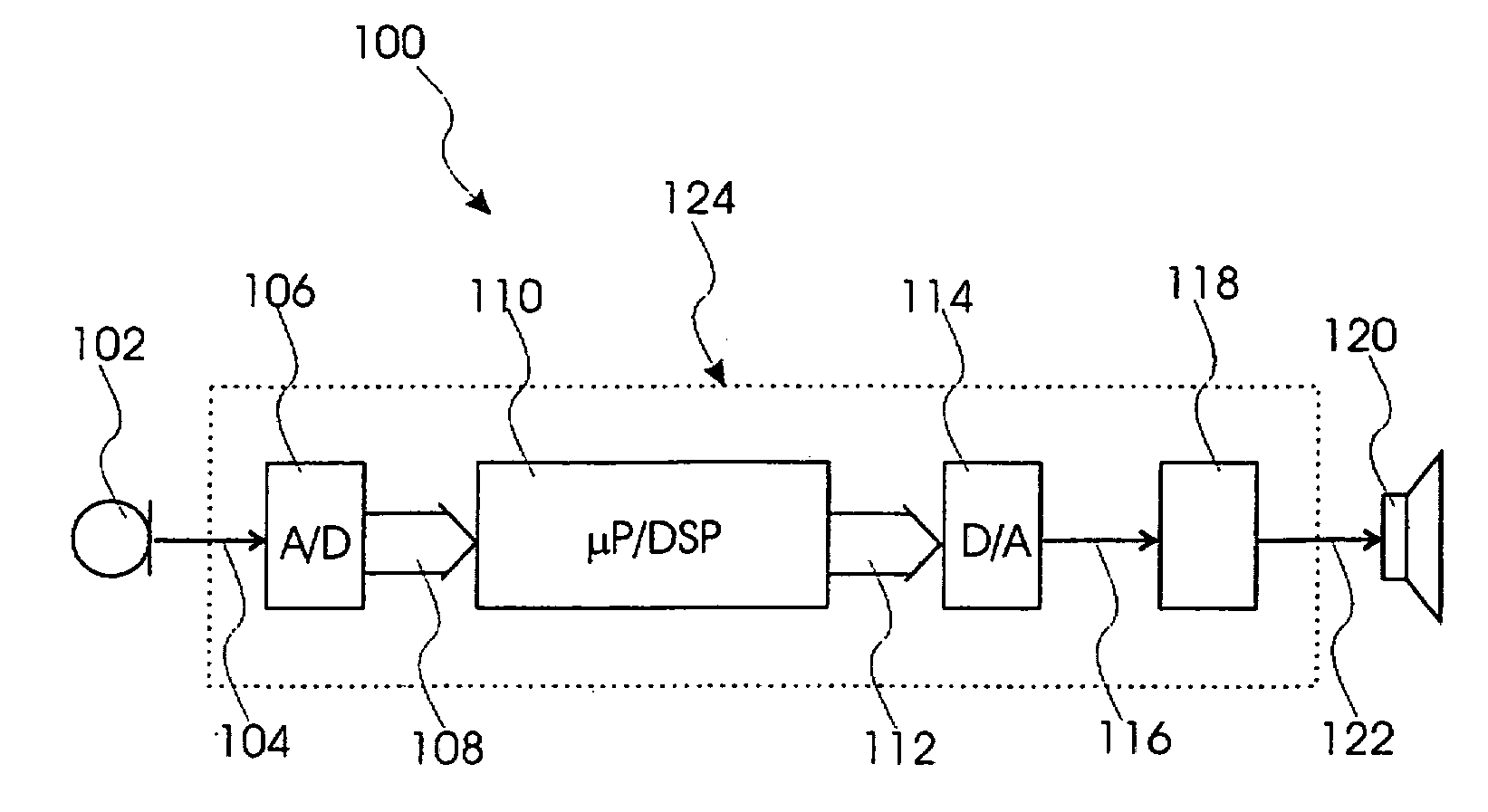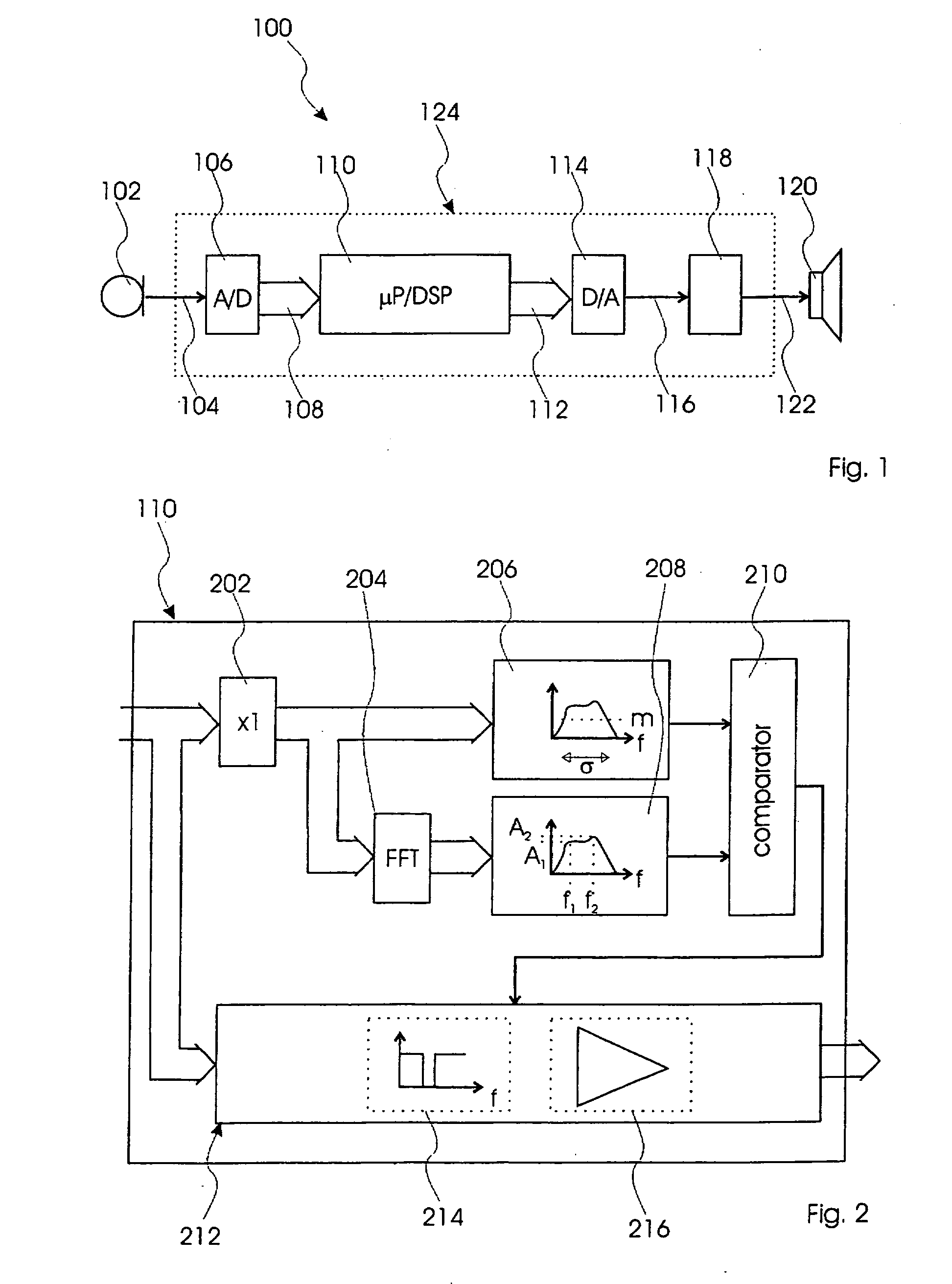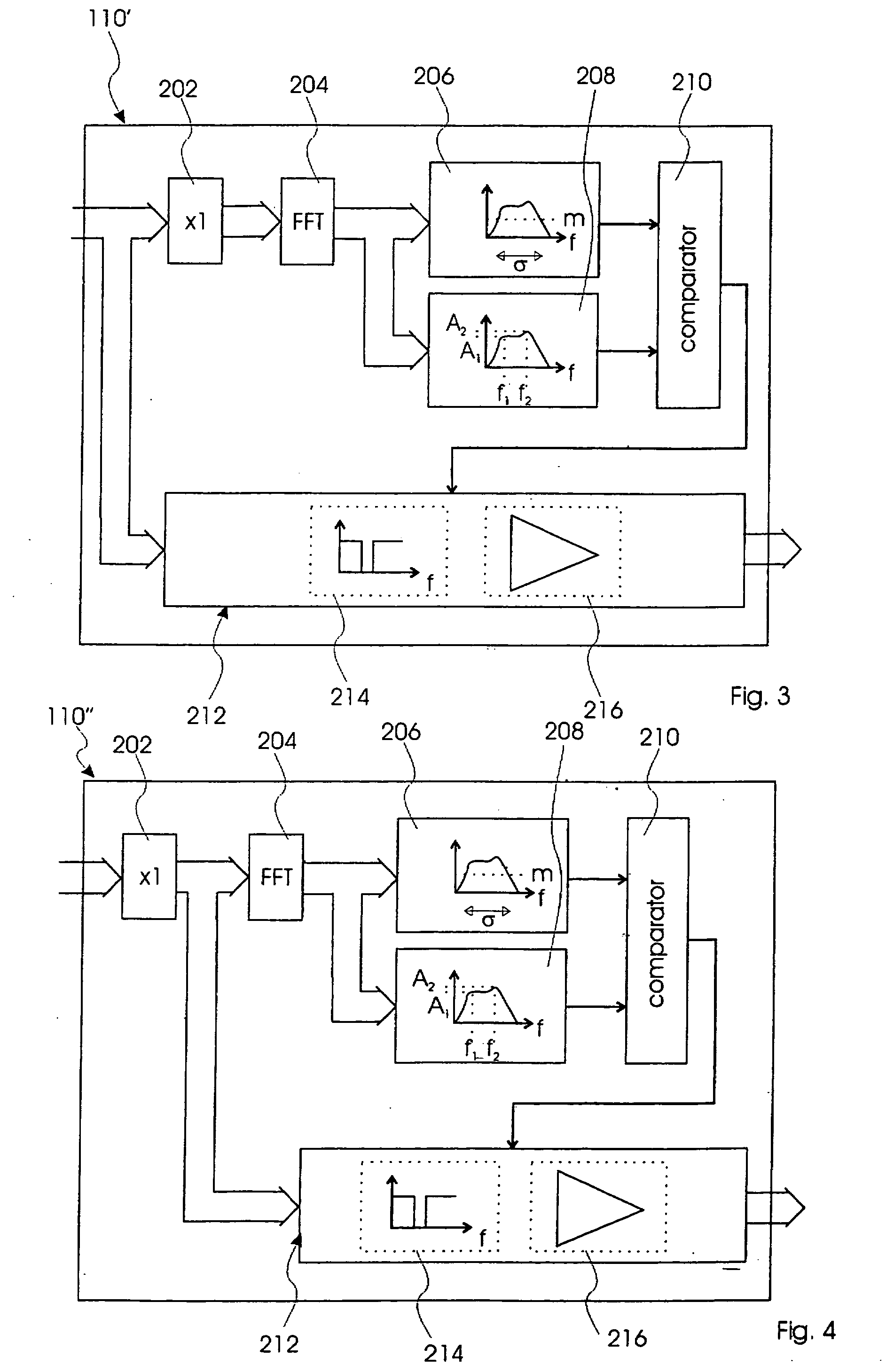Feedback cancellation in a sound system
a technology of acoustical feedback and a sound system, which is applied in the direction of tone control, transducer casing/cabinet/support, electric transducers, etc., can solve the problems of requiring a lot of processing power, and achieve the effect of avoiding unnecessary processing artefacts
- Summary
- Abstract
- Description
- Claims
- Application Information
AI Technical Summary
Benefits of technology
Problems solved by technology
Method used
Image
Examples
first embodiment
[0036]FIG. 1, shows a block diagram of a sound system according to the present invention and designated in entirety by reference numeral 100. The sound system 100 comprises a microphone unit 102 converting a sound to an analogue electrical sound signal. The analogue electrical sound signal is communicated through a first communication path 104 to an analogue-to-digital (A / D) converter 106, which converts the analogue electrical sound signal into a digital sound signal. The digital sound signal is communicated through a second communication path 108 to a sound processor 110, which processes the digital signal in accordance with a predetermined transfer function. The second communication path 108 may be a multi-channel bus. The sound processor 110 generates a processed digital signal and communicates this through a third communication path 112 to a digital-to-analogue (D / A) converter 114. The third communication path 112 may be identical to the second communication path 108 i.e. a con...
second embodiment
[0047]FIG. 3, shows a block diagram of a sound processor 110′ according to the present invention, which comprises the same elements of the sound processor 110 and these are referenced by the same numerals. The sound processor 110′ differs from the sound processor 110 by having the FFT unit 204 transforming the frames into frequency domain signals, which are then communicated to the threshold calculation unit 206 in this case being adapted to calculate a threshold value from the frame based on mean magnitude and standard deviation of the frequency spectrum of the frame.
[0048]FIG. 3, shows a block diagram of a sound processor 110″ according to a second embodiment of the present invention. The sound processor 110′ comprises the same elements of the sound processor 110 and 110′ and these are referenced by the same numerals. The sound processor 110″, however, differs from the sound processor 110′ by having the filter / amplifier unit 212 receive frames from the buffer unit 202 and thus per...
third embodiment
[0049]FIG. 4, shows a further block diagram of a sound processor 110′″ according to the present invention. The sound processor 110′″ comprises the same elements of the sound processors 110, 110′ and 110″ and these are referenced by the same numerals. The sound processor 110″, however, differs from the sound processors 110 and 110′ by having a filter / amplification unit 300 receiving the sound signal in the frequency domain from the FFT unit 204 and thus performing the filtering and amplifying operations on the sound signal in the frequency domain rather than on the digital sound signal or on the frames. The filter / amplification unit 300 further comprises an inverse FFT unit 302 for inverting the processed sound signal in the frequency domain back into a processed sound signal in the time domain.
PUM
 Login to View More
Login to View More Abstract
Description
Claims
Application Information
 Login to View More
Login to View More - R&D
- Intellectual Property
- Life Sciences
- Materials
- Tech Scout
- Unparalleled Data Quality
- Higher Quality Content
- 60% Fewer Hallucinations
Browse by: Latest US Patents, China's latest patents, Technical Efficacy Thesaurus, Application Domain, Technology Topic, Popular Technical Reports.
© 2025 PatSnap. All rights reserved.Legal|Privacy policy|Modern Slavery Act Transparency Statement|Sitemap|About US| Contact US: help@patsnap.com



